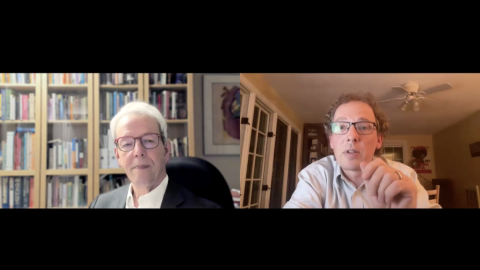The Rhetoric of Rape Culture
“Rape culture” has become a surprisingly elastic term. It stretches beyond perceived injustices, like the acquittal of Jian Ghomeshi, to include things like a catchy hit by Justin Bieber, or a call from CanLit authors for due process in the Steven Galloway firing. The ambitious concept purportedly captures all the ways that the trauma and pervasiveness of sexual assault is denied, trivialized, excused and eroticized in law and society. While the term has been kicking around since the 1970s, it was popularized by the 1993 anthology, Transforming a Rape Culture. Since then, its use has proliferated in progressive circles, with proponents of the term demanding that broader society acknowledge its “reality”. Regardless of one’s views on whether the above-noted instances can properly be described as manifestations of “rape culture,” it is worth investigating the terminology. Given the wide range of activities and attitudes that the concept is said to address, why don’t we use, for example, the broader term, “sexual assault culture” more often? Why are we still so attached to rape as the symbol to stand in for all sexual harm?
In fact, this privileging of “rape” is at odds with a key feminist reform. Prior to 1983, sexual assault was classified as rape in the Canadian Criminal Code, defined as forcible vaginal or anal penetration perpetrated by a man against a woman. The crime of indecent assault basically covered all other sexual crimes. Feminist advocates at the time pushed to move away from the morally-laden word “rape.” They argued that the term wrongly focused on the sexual nature of the crime, rather than its violence, and reflected antiquated beliefs that the primary harm was dishonour to the victim, and damage to a father’s or husband’s property. Forced oral sex, molestation, groping, and penetration with any object other than a penis was considered less serious, an issue of “indecency.” Rape thus rested on a phallic-centric ideology that had less to do with the severity of the violence, or how a woman experiences the trauma, and more to do with how patriarchy defines sex and purity.
Another glaring problem with the legal definition of rape was its perpetuation of heterosexism and cissexism. Male victims of sexual assault were effectively rendered invisible, along with female victims of female perpetrators. This approach strengthened sexist stereotypes where men are always the (potential) predators (or at least always up for sex), and women are always the (potential) victims, inherently incapable of inflicting sexual violence. This framework further entrenched the male/female biological binary, contributing to transphobia, and erasing the experiences of many transgendered, gender-variant and gender-non-binary people. This was a serious drawback. When the sexual victimization of entire groups of people is either denied or ridiculed, it makes it nearly impossible for them to name the violence, receive appropriate support services, or access judicial remedies.
Given the ideological and political problems with the rape terminology, why do we now see such vehement insistence on its use? Emily Bazelon, a proponent of the term “rape culture,” argues that “rape” better conveys the “brutality of unwanted sex,” because of its linguistic features (one syllable with a harsh sound), and its etymology. Yet an examination of the origin of the word “rape” undermines Bazelon’s position. According to Professor Louise du Toit, rape historically signified the theft of “live property,” like women, animals or slaves, and had nothing to do with the “brutality” of violating a woman’s sexual subjectivity or bodily autonomy. The fact that the seizure of this “special category of stolen goods” would often entail sexual violence was not historically of moral or legal concern. At best, then, the etymology of rape suggests the word was a euphemism for sexual assault, not an “unflinching” description, as Blazen states.
What about the argument that “rape culture” has more rhetorical punch than its alternatives? While this may be true, it’s not a good enough reason to keep it. In fact its effectiveness simply shows that on some level, many still adhere to traditional notions of rape, tacitly believing that forced intercourse is the worst form of sexual violence; that men wield dangerous lustful penises, while women are burdened with vulnerable vaginas; that no worse fate could ever befall a woman; and that the victim of rape is forever ruined. Capitalizing on the ideological underpinnings of “rape” is politically expedient. It can sway a lot of people. The term harnesses the moral outrage invoked by rape, and applies it to a host of disparate things to which the critic may object, like a sexualized advertisement for a burger, or a speaking invitation to a defence lawyer who works in the area of sexual assault. But not only is this potentially reductionist, it also reinforces the sexism, heterosexism and cissexism of the term.
Perhaps, if we really do need a one-concept-fits-all that conveys perceptions of sexual harm, the clunky term “sexual assault culture” may help us to take a step back. It might help us to challenge the patriarchal vestiges that accompany the term “rape.” It might also help us recognize that perpetrators, victims and survivors can have any sexual orientation or gender identity. And perhaps most importantly - because the term is less inflammatory - it might help us engage in more productive and respectful dialogue about the intersectional factors that give rise to sexual violation, as well as the best strategies for its eradication.

